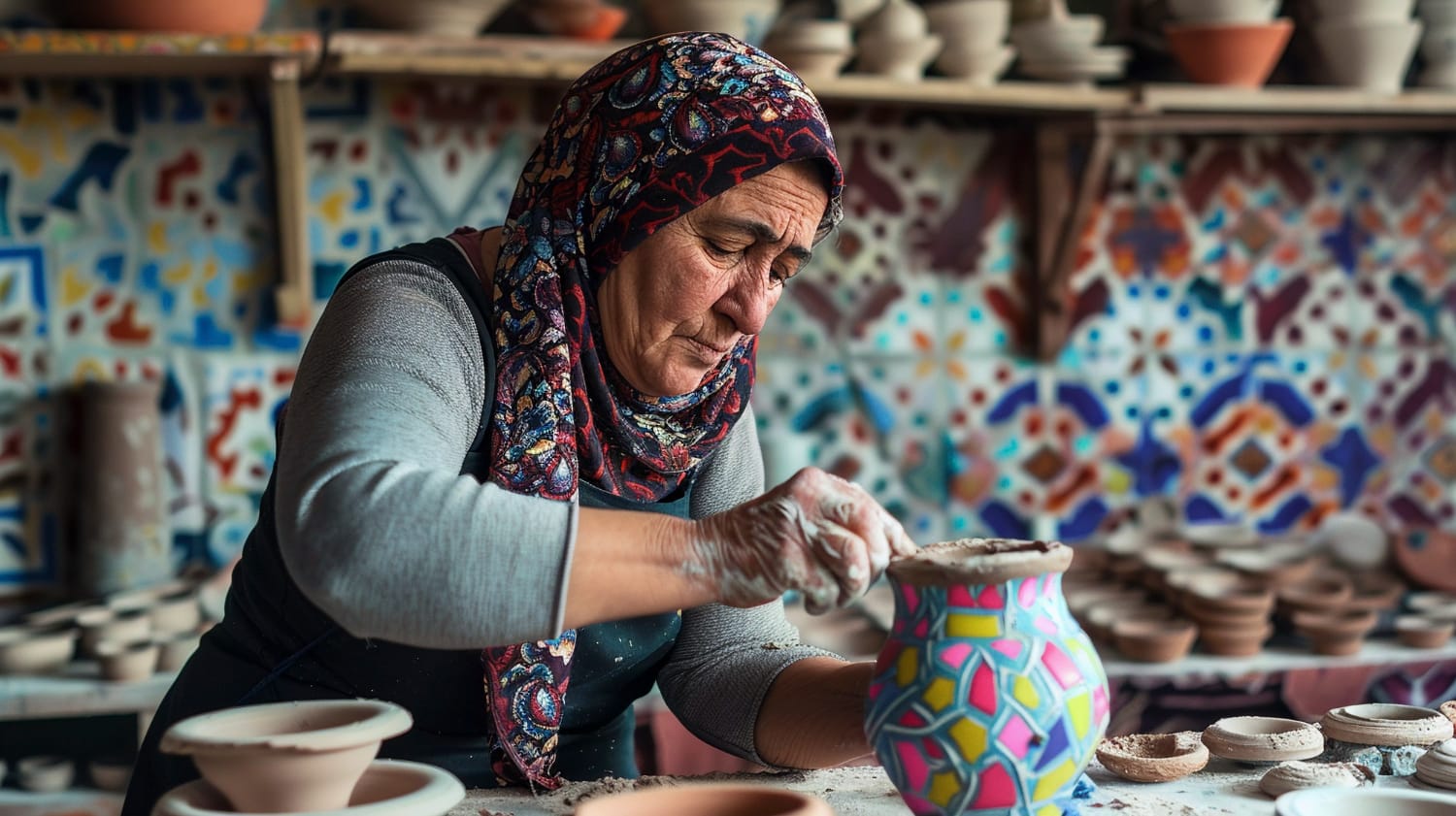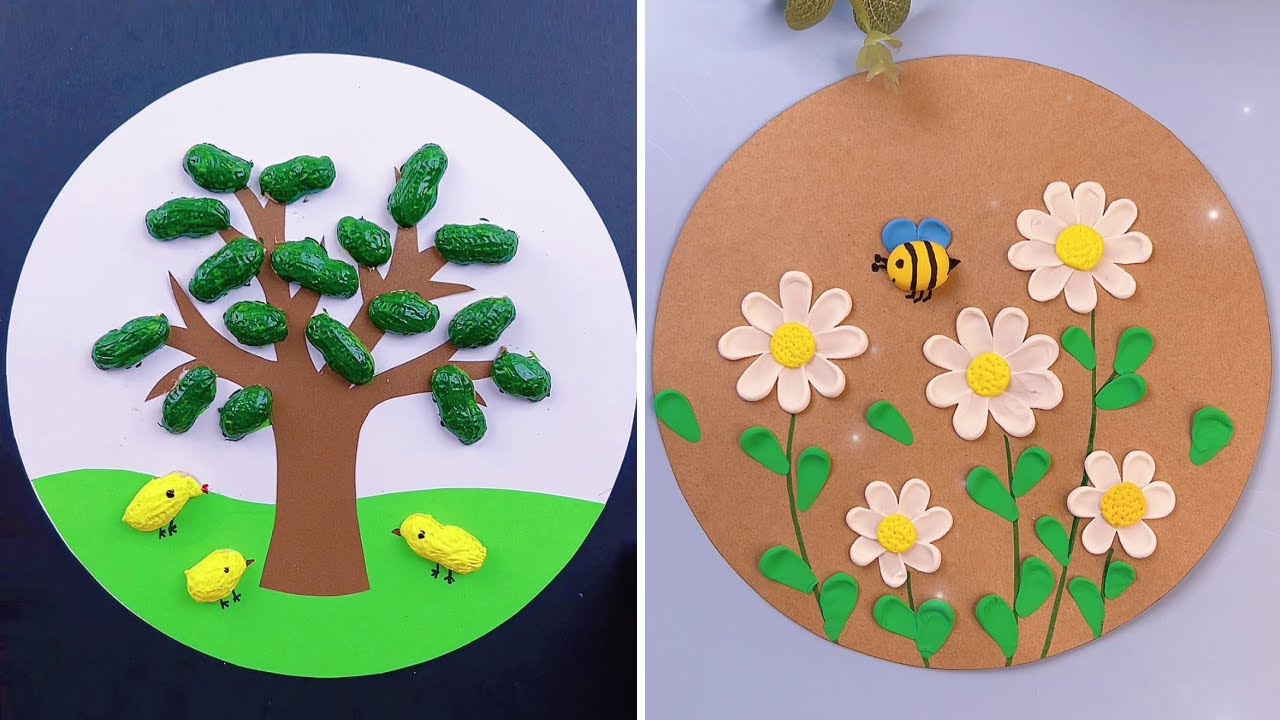Crafts as Occupational Therapy: Improving Motor and Cognitive Skills

Unlocking Potential Through Creative Expression
Engaging in crafts can serve as a powerful tool for rehabilitation. It not only fosters creativity but also enhances essential motor and cognitive skills. Many therapists are incorporating hands-on activities into treatment plans, leading to impressive outcomes for various populations.
Benefits of Crafts in Occupational Therapy
- Fine Motor Skills: Activities like knitting, sewing, or woodworking enhance hand-eye coordination and dexterity. For example, the repetitive motions involved in knitting can significantly improve the muscle control needed for tasks such as typing or playing a musical instrument, making it a highly effective skill-building exercise.
- Cognitive Development: Crafting encourages problem-solving and critical thinking. When an individual is tasked with constructing a model or figuring out how to mix colors for a painting, they engage their analytical skills and learn to plan and execute a project, enhancing their cognitive flexibility.
- Emotional Well-being: Creating art can reduce stress and anxiety, improving overall mood. Mindful crafting activities, such as adult coloring books or sculpting, can serve as a meditative practice, helping individuals focus and find tranquility, which is particularly beneficial in high-stress situations.
From children with developmental delays to seniors recovering from strokes, the benefits of crafts in occupational therapy are profound. Techniques such as beading, painting, and paper mache not only stimulate the brain but also promote social interaction. In group settings, participants often share knowledge, collaborate on projects, or simply enjoy each other’s company, enhancing their social skills and fostering community connections.
Real-World Applications
In recent years, communities across the United States have embraced the idea of crafting as therapy. Programs in hospitals and rehabilitation centers utilize this method to cater to individual needs, merging occupational therapy with creative expression. For instance, the Art Therapy Program at New York’s Mount Sinai Hospital offers workshops where patients can partake in creative activities that help mitigate their pain while promoting rehabilitation.
The intersection of art and therapy is more than just fun; it’s a path to recovery and skill enhancement. Research indicates that art therapy can significantly decrease physical pain and depression in patients undergoing treatment. As more people become aware of the impact of crafts on health, the dialogue around its efficacy continues to grow, driving initiatives to integrate these practices into everyday healthcare. This combination of creativity and rehabilitation holds great promise not only for individual healing but also for the reimagining of therapeutic practices across various settings in the country. With well-documented benefits, it is imperative for more communities to explore and invest in these valuable therapeutic outlets.
DISCOVER MORE: Click here to dive deeper

The Therapeutic Power of Hands-On Activities
The compelling relationship between crafts and occupational therapy is unfolding in a multitude of environments across the United States. This approach recognizes that creative activities are not just recreational; they can be transformational for individuals dealing with physical or cognitive challenges. Crafts such as pottery, origami, and scrapbooking serve as more than just a pastime—they become instrumental in advancing fine motor skills and cognitive capabilities.
Enhancing Fine Motor Skills
The importance of fine motor skills cannot be overstated. They are essential for daily activities such as buttoning a shirt, writing, or even doing household chores. Crafts requiring the use of tools or precision movements can enhance these skills markedly. Consider the intricate nature of beading: threading tiny beads onto a string requires not only dexterity but also focus and patience. Each small achievement in crafting builds an individual’s confidence in their physical abilities.
- Sewing: The act of guiding a needle and thread through fabric not only enhances hand strength but also improves coordination.
- Pottery: Manipulating clay helps both coordination and hand strength while offering sensory stimulation.
- Woodworking: Cutting and shaping wood is a fantastic way to cultivate hand-eye coordination and spatial awareness.
Your hands and brain work in unison when engaged in crafts, a phenomenon that can be profoundly beneficial for those recovering from injury or facing developmental challenges. Programs that integrate such activities into therapy see improved muscle control, which lays the groundwork for greater independence in daily tasks.
Advancing Cognitive Development
Crafts do not solely contribute to motor skills; they also play a vital role in enhancing cognitive function. The process of crafting involves various mental skills—planning, organizing, and innovatively solving problems. For example, when individuals engage in activities like building models or painting, they must comprehend spatial relationships and color theory. Such tasks develop critical thinking and problem-solving abilities, important components of cognitive development that impact everyday decision-making.
Therapists often introduce tasks that challenge both the left and right hemispheres of the brain, facilitating balanced mental development. Participants must consider aesthetics, balance, and functionality when embarking on a crafting project, promoting a comprehensive cognitive workout. Additionally, crafting builds the capacity for cognitive flexibility, allowing individuals to adapt their plans based on new information received during the creative process.
With every movement of scissors, every dab of glue, and every spin of the knitting yarn, therapy through crafts unveils a new dimension of capability for individuals. As communities become attuned to the potential of these activities, the integration of arts and therapeutic practices seems not just beneficial, but essential for holistic healing.
| Category | Description |
|---|---|
| Fine Motor Development | Engaging in crafts enhances hand-eye coordination and dexterity through various tasks. |
| Cognitive Improvement | Crafting activities stimulate problem-solving skills and promote creativity, aiding memory retention. |
| Social Interaction | Group crafting sessions build social skills and foster teamwork, encouraging emotional connections. |
| Stress Relief | Crafting provides an outlet for stress reduction, promoting mental well-being through mindfulness. |
Crafts as a form of occupational therapy blend creativity with therapeutic benefits, offering a comprehensive approach to enhancing motor and cognitive skills. Through the exploration of various materials and techniques, individuals develop essential skills that are crucial for daily living. For instance, the fine motor development gained through activities like knitting or origami can significantly impact one’s capability to engage in more complex tasks.Moreover, engaging in these crafts fosters an environment that promotes cognitive improvement by encouraging individuals to think critically and creatively as they construct their projects. This multifaceted approach not only aids in memory retention but also enhances problem-solving abilities. The added dimension of social interaction further enriches the experience, allowing participants to bond, share ideas, and collaboratively tackle challenges. Ultimately, the therapeutic nature of crafts acts as a double-edged sword in promoting emotional well-being. It serves as an effective method of stress relief, leading individuals toward a more peaceful and mindful state. As such, understanding how crafts can be integrated into occupational therapy opens a pathway for healing and development, inviting further exploration into this engaging therapeutic modality.
DISCOVER MORE: Click here to dive into the world of artistic expression
Integration of Social and Emotional Skills
Crafting as a form of occupational therapy extends beyond merely improving physical and cognitive skills; it also plays a significant role in nurturing social and emotional development. Engaging in group crafting activities fosters a sense of community, allowing individuals to connect with others who may share similar experiences or challenges. In environments such as rehabilitation centers, community workshops, or support groups, crafting becomes a catalyst for communication and collaboration.
Building Relationships Through Shared Creativity
Group crafting sessions encourage participants to express themselves while collaborating on projects that require teamwork. This interaction aids in the development of social skills such as negotiation, turn-taking, and constructive feedback. Whether it’s creating a mural together or working on communal knitting projects, individuals learn to communicate their ideas, listen to others, and find common ground. This not only enhances social competence but also builds meaningful connections, which are vital for emotional well-being.
Research has shown that social interaction is an essential ingredient in the healing process. According to the American Occupational Therapy Association, engaging in social activities can reduce feelings of isolation and depression, bolstering emotional health. Crafting as a group creates an arena where participants can celebrate their successes and support each other through challenges, ultimately reinforcing resilience and self-esteem.
Emotion Regulation and Expression
Crafting serves as a form of emotional expression, offering individuals a medium through which they can portray their feelings and experiences. Art therapy, a discipline closely aligned with occupational therapy, shows that engaging in crafts can lead to significant positive outcomes in managing emotions. For instance, creating something beautiful or meaningful can instill a sense of accomplishment and pride, countering negative thoughts and feelings.
Activities such as painting, drawing, or even using clay can serve therapeutic purposes. Research indicates that the act of creating art promotes the release of dopamine, a neurotransmitter associated with pleasure and reward. This biochemical response can relieve anxiety and foster a positive emotional state. Thus, crafting not only aids in the development of skills but also acts as a healthy outlet for emotions.
Tailored Activities for Individual Needs
Occupational therapists often tailor crafting activities to meet the unique needs and interests of each participant. By customizing projects—from simple paper crafts to more complex metalworking—therapists can ensure that the individual remains engaged while also promoting personal growth. This individualized approach maximizes the therapeutic effects of crafting, positioning it as a versatile tool across diverse populations, including children with developmental disabilities, adults recovering from trauma, and seniors facing dementia.
As crafting continues to gain recognition as a legitimate form of therapy, its integration into treatment plans across various healthcare contexts appears not only beneficial but vital. The multifaceted advantages of engaging in creative practices underscore their importance in facilitating holistic healing and rehabilitation for individuals facing numerous challenges.
DISCOVER MORE: Click here to start your culinary adventure
Conclusion
In summary, crafts as occupational therapy present a comprehensive approach to enhancing both motor and cognitive skills while simultaneously fostering social and emotional growth. The versatility of crafting activities—ranging from basic paper crafts to intricate art forms—allows occupational therapists to customize interventions that cater to individual needs, thereby maximizing engagement and therapeutic value. This customized approach not only aids in physical rehabilitation but also promotes self-expression and emotional regulation.
Furthermore, the social dimension of group crafting fosters a sense of belonging and community, which is essential in combating feelings of isolation. Participants develop crucial interpersonal skills, enhancing their ability to communicate and collaborate effectively. Research indicates that such social interactions are vital in reducing symptoms of anxiety and depression, thereby contributing to overall emotional well-being.
As we continue to explore the multifaceted benefits of crafting within therapeutic frameworks, it becomes clear that these creative practices are not merely recreational; they are integral to holistic rehabilitation efforts. The healing potential of crafting paves the way for innovative therapeutic interventions that address a wide array of challenges faced by diverse populations—particularly children with developmental disabilities, individuals recovering from trauma, and seniors experiencing cognitive decline.
In conclusion, the integration of crafting into occupational therapy serves as a powerful testament to the interconnectedness of creativity, health, and well-being. For those interested in exploring this dynamic intersection, ongoing research and case studies can provide valuable insights into effective practices and outcomes, illuminating a pathway toward improved quality of life for many.


